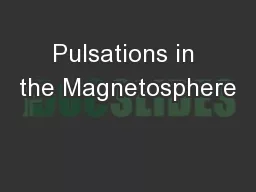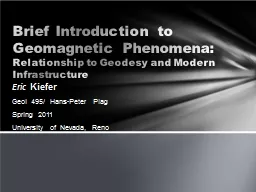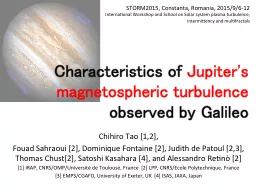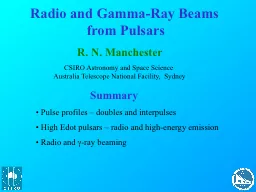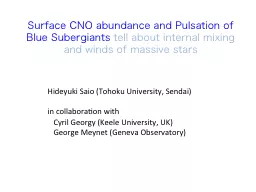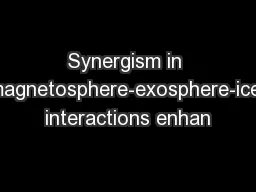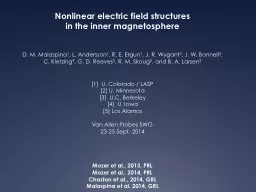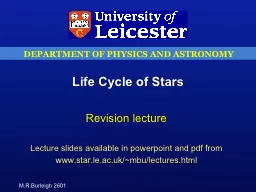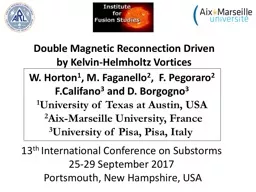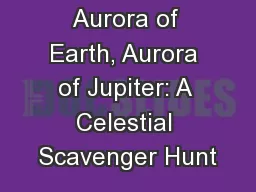PPT-Pulsations in the Magnetosphere
Author : test | Published Date : 2018-10-24
Jacob Schneider David Sibeck Magnetosphere Solar wind constantly collides with Earths magnetic field creating a cavity Extends about 1525 Earth radii in different
Presentation Embed Code
Download Presentation
Download Presentation The PPT/PDF document "Pulsations in the Magnetosphere" is the property of its rightful owner. Permission is granted to download and print the materials on this website for personal, non-commercial use only, and to display it on your personal computer provided you do not modify the materials and that you retain all copyright notices contained in the materials. By downloading content from our website, you accept the terms of this agreement.
Pulsations in the Magnetosphere: Transcript
Download Rules Of Document
"Pulsations in the Magnetosphere"The content belongs to its owner. You may download and print it for personal use, without modification, and keep all copyright notices. By downloading, you agree to these terms.
Related Documents

